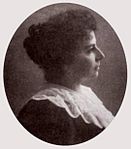Armenians in Italy
|
|
|||||
| Total population | |||||
|---|---|---|---|---|---|
| 2.500 | |||||
| Regions with significant populations | |||||
|
|
|||||
| Languages | |||||
| Armenian · Italian | |||||
| Religion | |||||
| Mainly Armenian Apostolic Church Armenian Catholic Church · Protestantism |
|||||
| Related ethnic groups | |||||
| Armenian · Hamshenis · Cherkesogai | |||||
Armenians in Italy covers the Armenians who live in Italy. There are currently 2.500-3.500 Armenians in Italy mainly residing in Milan, Rome and Venice; another main centre of Armenian culture and history is Padua.
Besides the general population, there are monastic communities on the island of San Lazzaro (Venice) as well as Armenian clergy at the Holy See (Vatican).
Armenians in Italy have had a presence since ancient Roman times. Teacher and rhetorician Prohaeresius was sent by the Emperor to Rome, where he became an object of popular veneration, culminating in the erection of his statue, which bore the inscription Regina rerum Roma, Regi Eloquentiae i.e. "(from) Rome, the queen of cities, to the king of eloquence".Justinian's Armenian general Narses successfully attacked resistance to Roman rule wherever it was located and remained a celebrated governor of Venice.
Later, in the 9th-10th centuries, a great number of Armenians moved to Italy from Thrace and Macedonia. They were the descendants of Paulicians chased from Armenia by emperor Constantin. An Armenian Byzantine princess, Maria Argyra, became Dogaressa of Venice in 1003.
As to Armenian communities, they were formed in Italy in the 12th-13th centuries, when active trade was going on between Cilician Armenia and Italian big city-republics as Genoa, Venice and Pisa. Under Cilician Armenian king Levon II (1187–1219) (also known as King Leo II of Armenia), treaties were signed between the two parties, according to which Italian merchants had the right to open factories and to develop industrial activities in the Armenian Kingdom of Cilicia and Armenian merchants could do the same in Italian towns. These treaties were periodically renewed, as long as the Cilician Armenian Kingdom existed. In the 13th century the number of Armenians in Italy increased because of the new wave of emigrants after the invasion of Tatars and Mongols. Leonardo da Vinci made drawings of Armenians living in Italy.
...
Wikipedia




